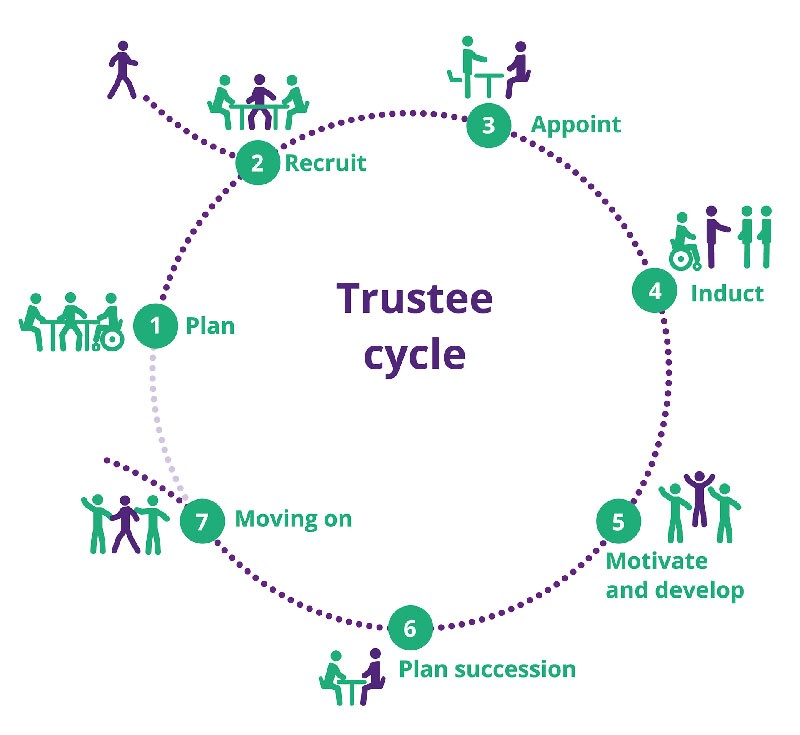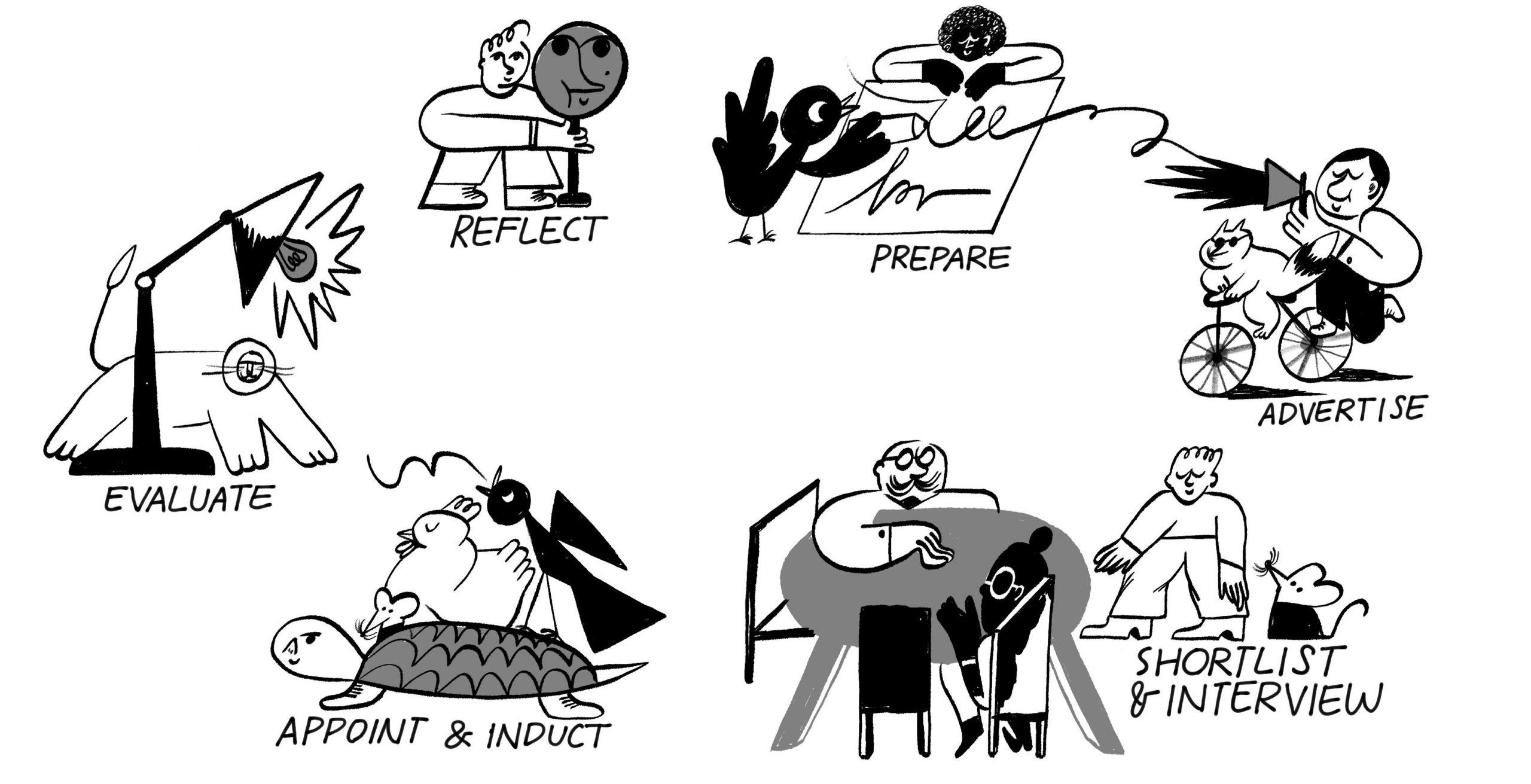In our last blog we talked about how to attract trustees to your organisation. In part three we talk about how to support them when they get there.

Supporting Trustees
You’ve done all the hard work to recruit trustees to your organisation, but once they’re on board, what help is out there to support them?
Retaining trustees and developing a trustee board is something you have to work hard at.
This is illustrated by the Trustee Recruitment Cycle by Reach Volunteering below and the Association of Chairs’ Trustee Cycle at the top of this post.
Both show how important it is to factor in induction, motivation and development for trustees – as well as time to plan for their successors.

The good news is support for trustees varies; from simple guides and webinars about the role to ongoing training and networking opportunities.
All the green links in the article below are in the Governance and Trustees section of our website.
The Essentials
An excellent starting point is the Foundation for Social Improvement (the FSI). Its video series, The Essential Trustee, shares everything you need to know about being a trustee in a clear, simple and succinct way.
The series reminds us that it is the responsibility of a Trustee Board to work in the best interest of the charity’s beneficiaries.
Trustees are advised they should really know the difference their charity is making and to ask key questions on an annual basis. Questions such as; have our beneficiaries needs changed or remained constant? What are we doing to confirm these needs? Are we clear we’re meeting these needs?
What is a Trustee?
Another good starting point is with The National Council for Voluntary Organisations (NCVO), the umbrella body for the voluntary and community sector in England.
They have stacks of useful guides and regularly run the course: Charity Trustee Induction and Refresher.
Their Getting started in Governance section, on the web, has all the basics and is free to all. It includes the questions: What is a board? What is a trustee? What is a governing document?
The Board Basics section includes a template trustee induction pack.
The Charity Commission publish a guide: The Essential Trustee: what you need to know, what you need to do. They’ve also produced a Finding Trustees guide and a guide on recruitment and induction, which is packed with essential information, including common problems and pitfalls such as trustees believing their position is purely honorary and not knowing what the charity does and does not do.
Top Tips
Directory of Social Change (DSC) have a handy blog Being An Effective Trustee with tips such as ‘build relationships between meetings’ and ‘stay informed’. They also run paid-for online training courses and plan to return to training in actual locations in October.
The Association of Chairs are a membership organisation for Chairs of Trustees and offer lots of support including blogs like this one from chief executive Ros Oakley about planning the best way forward.
Support includes top tips, networking opportunities and resources such as training on everything from staff restructuring and redundancies to ‘chairing with confidence’. A September session has the great title: Dynamic Duo – Balancing the Roles Between Chair and CEO.
Chairs and Vice-Chairs can join their network of 750 for a £50-£100 annual fee.
The Young Trustees Movement have all sorts of resources to help you find and support young trustees. Young means anyone aged 30 and under.

What shape is your board in?
NCVO’s Governance and Trustees section includes the following advice:
“It is a good idea to evaluate the board annually by considering the following: Have you got enough trustees with the right knowledge, experience and skills? Do your trustees need training or support to do their jobs effectively? Do you need new trustees and where will we find them?”
Their Trustee Skills Audit exercise will help you answer these questions effectively.
The Charity Governance wheel is a simple tool that helps boards of voluntary organisations get a sense of how well they’re functioning and fulfilling their roles. Completing it will give you an instant visual impression of the shape that your board is in.
This can be found on the NCVO website and works well with the Charity Governance Code, which includes the seven hallmarks of a good charity. There is a self-assessment tool on the website that you can use to review your Board.
All the resources mentioned here will help you get the best from your Trustee Board – and help them do a rewarding and meaningful job.
Check out our Governance and Trustees page for all the links to these resources.
Read our previous two blogs in this series Finding Trustees and Finding Trustees #2
